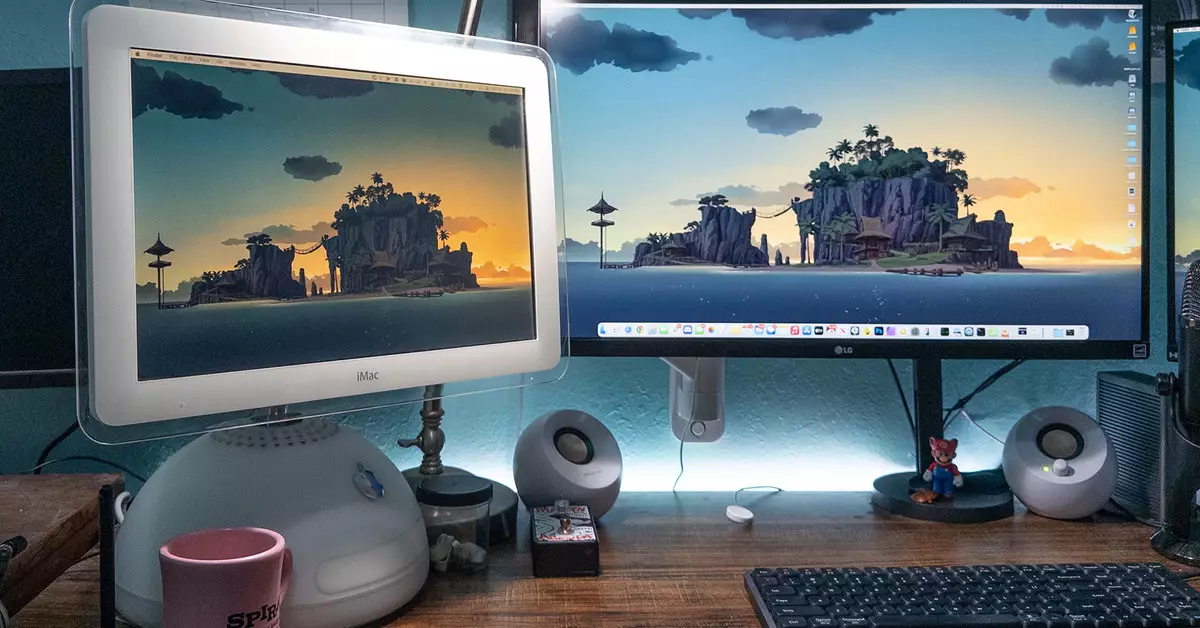Two decades have passed since Apple said goodbye to a computer that embodied creativity and innovation—the iMac G4. With its striking half-globe base and an elegant, articulating screen designed for optimal viewing angles, the iMac G4 was more than just a mere machine; it was a statement piece that graced many desktops. However, time has been unkind, leaving this vintage marvel a lovely but largely impractical relic by today’s standards. For those who admired its quirky design but lamented not being able to own one, the advent of the DockLite G4 offers a glimmer of hope, enabling users to integrate a piece of computing history into modern functionality.
Introducing the DockLite G4: A Functional Retrofit
In a refreshing twist, Juicy Crumb has engineered a solution to breathe new life into the aging iMac G4: the DockLite G4. This drop-in replacement motherboard not only honors the original’s design but also upgrades its functionality with modern inputs, including an HDMI port alongside several USB ports—both USB-A and USB-C. Notably, the DockLite G4 retains the original iMac’s mounting design, making the installation process a gratifying experience that requires only a screwdriver and some light prying. A YouTube guide simplifies the process even further, making it an attractive DIY project for tech enthusiasts.
With an estimated installation time of about 30 minutes, transforming an old 17-inch iMac G4 into a contemporary external monitor becomes a manageable endeavor. Importantly, the device acquires new versatility and can easily accommodate various devices from laptops to gaming consoles. Despite this innovation, it’s evident that the journey back to modern relevance does mean sacrificing certain original features. Users bidding farewell to the iMac’s optical drive should be prepared for some adjustments.
While the appeal of reinvigorating a classic Apple product is undeniable, some limitations factor into this blend of old and new. The DockLite G4 allows for integration with current technologies, yet it doesn’t come without compromises. The iMac G4, once a fully functional computer, is now relegated to serving as a monitor, a choice that might not suit everyone. For enthusiasts hoping to run modern applications on the iMac hardware, replacing more components like the motherboard with alternatives such as a Mac Mini would be necessary, potentially rendering the project prohibitively complex or costly.
Despite these hurdles, the ease of reverting to the original setup should provide comfort for prospective users concerned about the permanence of their modifications. At any point, the original motherboard can be reinstalled, paving the way for a risk-free transformation.
The investment required for the DockLite G4, which stands at $260, instigates a discussion around value and functionality. In a market flooded with budget displays and modern alternatives, the price tag might initially evoke apprehension. However, considering the meticulous efforts that go into each unit’s creation—every piece being manually tested—there is a tangible sense of quality that accompanies the purchase. Juicy Crumb’s CEO emphasizes the hurdles in bringing a niche product to market, supporting a price that reflects time and craftsmanship.
Yet, even with assurances of quality, one cannot dismiss the dialogue regarding performance. The inherent limitations of the iMac G4’s display—characterized by lower resolution and less-than-ideal viewing angles—echo throughout the conversation. For some, the allure of its aesthetic appeal may outweigh its functional drawbacks, but others may find it difficult to justify such an expense for an older display technology.
Ultimately, the blend of nostalgia and modernity encapsulated in the DockLite G4 represents a unique intersection of usability and sentimentality for tech enthusiasts. Although modern displays abound, the drive to make something beautiful like the iMac G4 functional again is an adventure worth undertaking for many fans. Despite the inevitable trade-offs, the opportunity to own a piece of computing history that serves a modern purpose makes this experience undeniably worthwhile. After all, some machines are more than just machines; they are an expression of artistic design and functional innovation.

